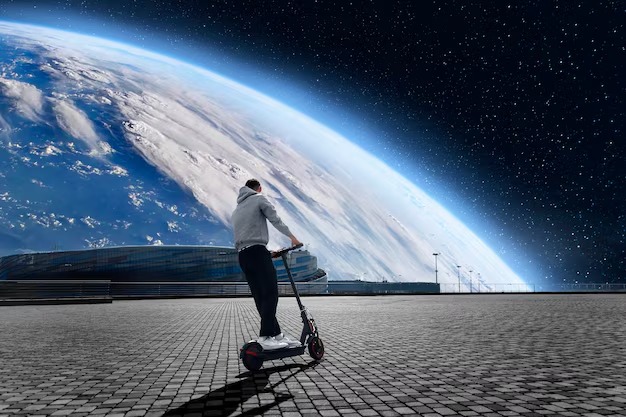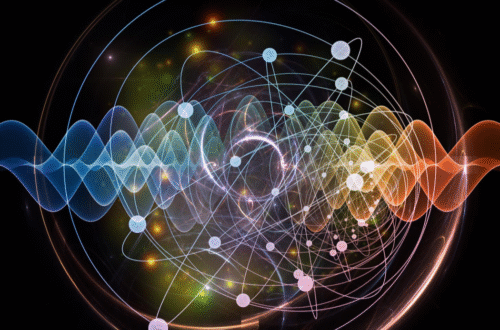Imagine lying on a grassy hill as a kid, gazing up at the night sky, counting stars until your eyes blurred. I did that a lot growing up in a small town with little light pollution, feeling like those twinkling lights were eternal companions. But years later, diving into astronomy books and chatting with stargazing buddies, I started wondering: could the universe actually run out of stars? It’s a mind-bending question that blends cosmic history with our own fleeting existence, and science has some fascinating—and a bit somber—answers.
The Cosmic Story of Stars: A Brief Overview
Stars aren’t just pretty dots; they’re the universe’s engines, born from collapsing gas clouds and fueling everything from planets to life itself. Over the universe’s 13.8 billion-year lifespan, star formation hasn’t been steady—it’s had highs and lows like a dramatic novel. Today, we’re in a phase where things are slowing down, but to understand if we’re “running out,” we need to look back at how it all began.
From the Big Bang to the First Twinkles
Right after the Big Bang, the universe was a hot soup of particles with no stars in sight for about 150 million years. Then, gravity pulled hydrogen and helium into clumps, igniting the first massive stars that lit up the darkness. These pioneers were short-lived but crucial, seeding space with heavier elements for future generations.
The Golden Age of Star Birth
Around 10 to 11 billion years ago, star formation hit its stride, churning out stars at a rate nine times higher than today. Galaxies collided more often back then, compressing gas and sparking bursts of new stars. It was like the universe’s wild youth, full of energy and creation.
Why Stars Form (And Why They Might Stop)
Star formation needs cold, dense gas clouds collapsing under gravity, often triggered by shocks from supernovae or galaxy mergers. But as the universe expands, that gas gets spread thinner, making it harder for new stars to spark. It’s a bit like trying to start a campfire with damp wood—the conditions just aren’t as favorable anymore.
The Role of Gas and Gravity
Hydrogen is the main fuel, but over time, it’s locked up in stars or blown away by explosions. Gravity pulls things together, yet dark energy pushes galaxies apart, reducing those helpful collisions. Without enough raw material clumping up, star birth slows to a crawl.
Heavy Elements: A Double-Edged Sword
Early stars made light elements, but later ones enrich gas with metals like iron, which cool clouds faster but also make formation take longer. In older galaxies, this enrichment means stars form over billions of years instead of quickly. It’s nature’s way of pacing itself, but it contributes to the overall decline.
Peering into the Past: Cosmic Star Formation History
Scientists piece together the universe’s star story using telescopes like Hubble and James Webb, measuring light from distant galaxies to map formation rates over time. The cosmic star formation rate peaked at redshift z~1.9, about 3.5 billion years after the Big Bang, then dropped exponentially. Half of all stars we see today formed before redshift z=1.3, with only a quarter in the last six billion years.
The Peak: A Burst of Stellar Activity
At its height, the universe formed stars at a whopping 0.1 solar masses per year per cubic megaparsec—sounds technical, but it means galaxies were star factories. This era, around 10 billion years ago, saw 97% more star formation than now, driven by denser gas and frequent mergers.
The Decline: From Boom to Bust
Since the peak, rates have fallen by about 97%, to just 3% of that maximum today. Expansion dilutes gas, stripping it from galaxies in clusters, and heavier elements slow the process—it’s like the universe is maturing and settling down.
Is the Universe Really Running Out of Stars Right Now?
Not exactly “running out” like a car out of gas, but the production line is winding down. We’re making nine times fewer stars than at the peak, with most galaxies now quiescent rather than active birthers. In our Milky Way, spots like the Orion Nebula still crank out stars, but overall, the cosmos is past its prime.
Current Star Counts: Mind-Boggling Numbers
Estimates put the universe at one septillion stars—that’s 1 followed by 24 zeros—but many are old and dying. New ones form at a trickle, maybe a few per year in the Milky Way, compared to hundreds in the past. It’s not empty yet, but the freshness date is expiring.
Evidence from Telescopes and Surveys
Data from surveys like the Galaxy And Mass Assembly show energy output from stars halved in the last two billion years. Infrared and UV observations confirm the slowdown, painting a picture of a universe cooling off gracefully.
The Future: A Darker, Quieter Cosmos
If trends continue, star formation will grind to a halt in about 100 trillion years, ushering in the Degenerate Era where remnants like white dwarfs and black holes dominate. The universe won’t end with a bang but a whimper, growing colder and emptier over eons.
The End of the Stelliferous Era
By 100 trillion years, gas runs dry, and no new stars ignite—the Stelliferous Era fades. Existing stars burn out: massive ones explode quickly, while red dwarfs linger for trillions of years before cooling to black dwarfs.
Beyond: Degenerate and Black Hole Eras
From 10^14 to 10^40 years, degenerate remnants rule, with rare flares from collisions. Then black holes evaporate via Hawking radiation over 10^100 years, leaving a dark, photon-filled void in the Dark Era.
Factors Accelerating the Decline
Dark energy speeds up expansion, preventing new structures from forming and mergers that spark stars. As galaxies age, their gas gets hotter and more dispersed, less prone to collapse. It’s like the universe is stretching out, diluting the ingredients for star recipes.
Expansion and Dark Energy’s Grip
Dark energy, making up 68% of the universe, pushes everything apart faster, isolating galaxies and starving them of fresh gas inflows. Without these, star formation can’t rebound.
Supernovae and Feedback Loops
Exploding stars eject gas, preventing it from recycling into new stars— a self-regulating cycle that amps up as more stars die. In dense clusters, this feedback is even stronger, hastening the quieting.
Comparisons: Past, Present, and Future Star Formation
Looking at eras side by side reveals a stark evolution. The past was vibrant with rapid births; now it’s steady but slowing; the future promises scarcity.
Past vs. Present: A Tale of Two Universes
- Past (10B years ago): Peak rate, 9x today’s; galaxies merging wildly; mostly massive, short-lived stars.
- Present: 3% of peak; stable galaxies like Milky Way; mix of star types, but fewer births.
- Key Difference: Denser universe fueled more activity; now expansion dilutes it.
Present vs. Future: Fading Lights
- Present: Billions of active stars; observable bursts in nebulae.
- Future (100T years): No new stars; remnants cooling; universe darkens.
- Key Difference: Gas abundance today vs. total depletion later.
Pros and Cons of a Declining Star Universe
Every cosmic shift has upsides and downsides, even if they’re hypothetical for us humans.
Pros: A Calmer Cosmos?
- Fewer supernovae mean less destructive radiation, potentially safer for any lingering life.
- Slower pace allows stable planetary systems to endure longer without disruptions.
- Scientific bonus: Easier to study ancient remnants without new stars overwhelming views.
Cons: The End of Brilliance
- Darker skies rob future observers of starry wonders—imagine no more Milky Way band.
- No new stars mean no fresh elements or energy sources for potential civilizations.
- Emotional hit: The universe feels lonelier, like a party winding down too soon.
Table: Timeline of the Universe’s Stellar Fate
| Era | Timescale (Years After Big Bang) | Key Events | Star Formation Status |
|---|---|---|---|
| Stelliferous | 10^8 to 10^14 | Stars dominate; galaxies merge | Active, peaking at 3.5B years; declines after |
| Degenerate | 10^14 to 10^40 | Remnants like white dwarfs rule; rare collisions | Ceased; occasional flares from mergers |
| Black Hole | 10^40 to 10^100 | Black holes evaporate via Hawking radiation | None; temporary light from evaporation |
| Dark | 10^100+ | Photons and leptons only; heat death | None; eternal dimness |
This table simplifies the vast timescales, but it highlights the progression from bustling to barren.
People Also Ask: Common Questions About the Universe’s Stars
Drawing from what folks often search on Google, here are some related queries with quick insights.
Will the Universe Ever Completely Run Out of Hydrogen?
Not entirely—some hydrogen will linger between stars, but it’ll be too diffuse for formation. Eventually, in trillions of years, proton decay might break it down if theories hold.
Is the Universe Dying Faster Than We Thought?
Recent studies suggest yes, with remnants fading in about 1 quinvigintillion years—1 followed by 78 zeros—shorter than prior estimates.
What Happens When All Stars Burn Out?
The universe turns dark and cold, with black holes eventually evaporating, leading to a heat death where energy is evenly spread and nothing happens.
Are There Infinite Stars in an Infinite Universe?
Even if infinite, matter isn’t unlimited, so star formation will still cease as local gas depletes.
Where to Learn More: Navigational Tips
Curious minds can dive deeper with resources like NASA’s Hubble site for galaxy images or the James Webb Space Telescope’s data on early stars. Check out arXiv for free papers on cosmic history. For hands-on, apps like Stellarium let you simulate the night sky.
Best Tools for Exploring Star Formation
For hobbyists, telescopes like the Celestron NexStar series track stars automatically—great for spotting nebulae. Software such as SkySafari simulates cosmic timelines, showing future dark skies. Pros: Affordable and educational; cons: Can’t change the universe’s fate!
FAQ: Answering Your Burning Questions
How Many Stars Are in the Universe Right Now?
About one septillion, but that’s an estimate—our observable universe has around 100 sextillion, with more beyond. It’s vast, yet finite in practice.
Will Humans See the End of Star Formation?
No way—it’s trillions of years away, far beyond our species’ timeline. But studying it now helps us appreciate the stars we have.
Why Is Star Formation Declining So Much?
Mainly expansion, gas depletion, and feedback from stars themselves. It’s a natural evolution, not a sudden stop.
Can Anything Restart Star Formation in the Future?
Rare events like brown dwarf collisions might spark a few, but overall, no—the universe’s expansion seals the deal.
Is There Hope for a Starry Rebirth?
Theories like a Big Crunch could reset everything, but current data points to eternal expansion. Still, who knows what discoveries await?





